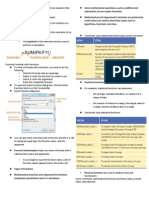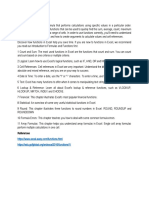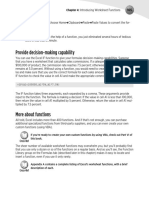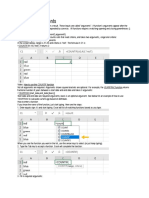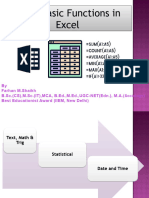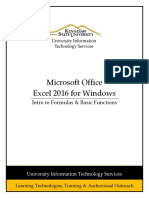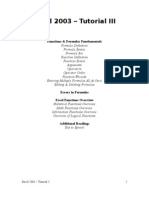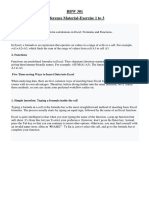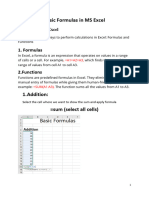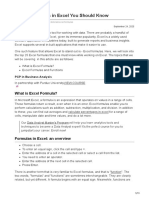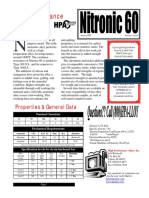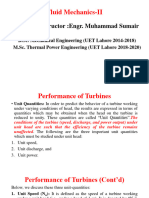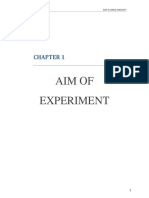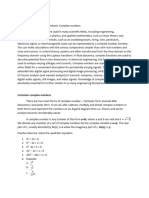0% found this document useful (0 votes)
8 views21 pagesEddons - ExcelLesson05
This lesson covers the use of functions in Excel, including their structure, types, and applications in mathematical, statistical, financial, and logical operations. It emphasizes the importance of the Insert Function dialog box and Formula AutoComplete for entering functions. Functions can also be used to handle dates, times, and text formatting.
Uploaded by
lickezchihanaCopyright
© © All Rights Reserved
We take content rights seriously. If you suspect this is your content, claim it here.
Available Formats
Download as PDF, TXT or read online on Scribd
0% found this document useful (0 votes)
8 views21 pagesEddons - ExcelLesson05
This lesson covers the use of functions in Excel, including their structure, types, and applications in mathematical, statistical, financial, and logical operations. It emphasizes the importance of the Insert Function dialog box and Formula AutoComplete for entering functions. Functions can also be used to handle dates, times, and text formatting.
Uploaded by
lickezchihanaCopyright
© © All Rights Reserved
We take content rights seriously. If you suspect this is your content, claim it here.
Available Formats
Download as PDF, TXT or read online on Scribd
/ 21

